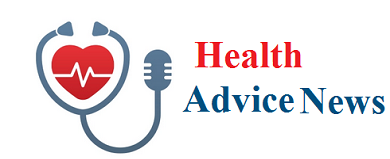 Over time, speech therapy has changed drastically, embracing a variety of cutting-edge methods created to cater to the particular requirements of adults. Whether addressing difficulties with communication brought on by acquired injuries, developmental abnormalities, or neurological illnesses, these techniques offer practical ways to improve speech and language abilities. Some of the most cutting-edge methods for adult speech therapy are examined in this article.
Over time, speech therapy has changed drastically, embracing a variety of cutting-edge methods created to cater to the particular requirements of adults. Whether addressing difficulties with communication brought on by acquired injuries, developmental abnormalities, or neurological illnesses, these techniques offer practical ways to improve speech and language abilities. Some of the most cutting-edge methods for adult speech therapy are examined in this article.
Augmented Reality (AR) and Virtual Reality (VR)
The fields of augmented reality (AR) and virtual reality (VR) are revolutionising speech treatment. Adults can practise speaking and language in real-time scenarios with the use of these immersive and interactive environments created by these technologies. By simulating social settings, public speaking occasions, and everyday encounters, VR and AR can help people become more adept communicators in a secure environment.
Adults who participate in these virtual worlds report feeling less anxious and more motivated. Realistic environments facilitate the practical application of skills, resulting in more significant and long-lasting gains. By customising these experiences to each patient’s unique needs, speech therapists can increase the effectiveness and personalisation of therapy.
Biofeedback
Another cutting-edge method in adult speech treatment is biofeedback. This technique transmits data regarding physiological processes, like breathing patterns and muscular tension, through electronic monitoring. Biofeedback is a tool used in speech therapy to assist patients become more conscious of and in control of their speech systems.
For example, adults may control their breathing patterns, vocal pitch, and volume with visual and aural input. People who stutter, have dysarthria or have voice abnormalities can benefit most from this practice. Biofeedback allows people to immediately make changes and advancements by giving them access to real-time data, which makes therapy sessions more productive and successful.
Cognitive-Behaviour Therapy
A well-researched psychological intervention known as cognitive-behavioural therapy (CBT) has been modified for use in speech therapy. The goal of cognitive behavioural therapy (CBT) is to recognise and alter harmful thought patterns and actions that underlie communication problems. Through treating the cognitive components of speech difficulties, this method assists adults in controlling their fear, gaining self-assurance, and creating better communication practices.
Adult stutterers, for instance, might benefit from CBT by developing coping mechanisms for the nervousness and fear that come with speaking. This method assists people in reframing their ideas and implementing constructive communication techniques, which eventually enhances their speech fluency and general quality of life.
Rhythmic Therapy and Music
Music and rhythmic therapy use the innate relationship between rhythm and speech to enhance communication abilities. This method improves speech fluency, articulation, and prosody by incorporating musical components into speech exercises like chanting, singing, and rhythmic activities. Adults with aphasia, apraxia, or other motor speech problems benefit most from music therapy.
Playing music activates many brain regions, encouraging neuroplasticity and supporting the restoration of speech and language abilities. This imaginative and entertaining approach makes treatment sessions more productive and pleasurable, and it also helps lower anxiety and boost motivation.
Conclusion
Adults with unique communication issues can find effective answers with innovative speech therapy strategies. Through the application of these strategies, adult speech therapy keeps developing. In addition to improving communication abilities, these techniques help raise the standard of living for those who are trying to overcome speech and language challenges.
